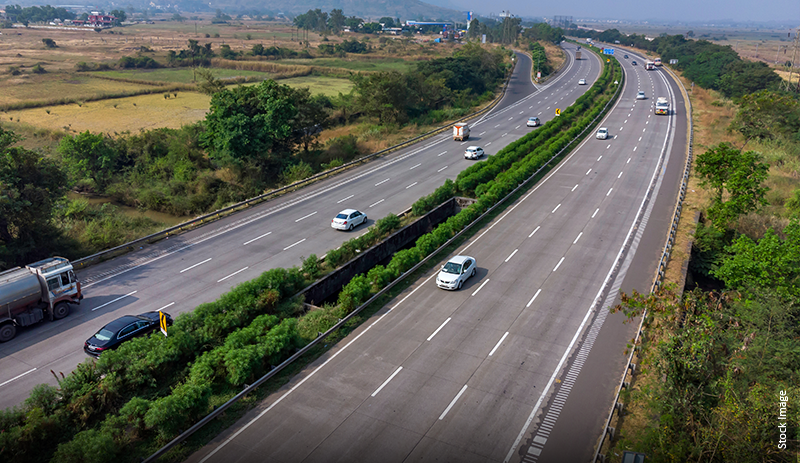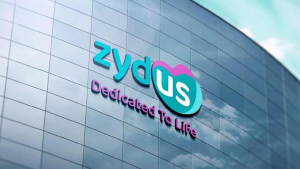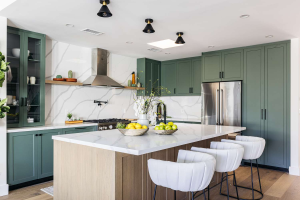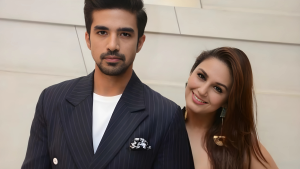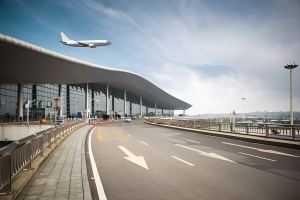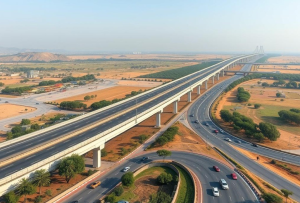About Delhi Mumbai Expressway
Delhi Mumbai Expressway is a visionary project of the government of India which will connect the country’s two largest financial hubs i.e., the national capital of New Delhi and the economic capital of India, Mumbai. The eight-lane expressway is India’s longest, and it can be expanded up to twelve lanes per traffic volume.
The National Highways Authority of India (NHAI) is building and maintaining the Delhi-Mumbai Expressway route. PM Modi officially opened the Sohna-Dausa section of the Delhi Mumbai Expressway on February 12, 2023. At the opening ceremony were also Union Ministers VK Singh, Nitin Gadkari, and Gajendra Singh Shekhawat. The public has been able to access the stretch since February 14, 2023. By June 2024, the Delhi Mumbai Expressway project should be finished in its entirety, cutting the 24-hour travel time between Delhi and Mumbai to just 12 hours.
Learn everything there is to know about the Delhi Mumbai Expressway’s construction phases, costs, and route.
Img alt tag – Delhi Mumbai Expressway Inauguration
Delhi Mumbai Expressway Key Facts
The following are some essential facts regarding the Delhi Mumbai Expressway:
| Particulars | Details |
| Project Length | 1,350 KM |
| Project Cost | Rs 1,00,000 crore (approximately) |
| Lanes | 8 Lanes (including a separate lane for electric vehicles. Plus expandable to 12 lanes.) |
| States Covered | Delhi, Haryana, Rajasthan, Madhya Pradesh, Gujarat and Maharashtra |
| Start and End Points | Start – DND Flyway, Delhi & Sohna, HaryanaEnd – Virar, Maharashtra & Jawaharlal Nehru Port Trust, Maharashtra |
| Date of Completion | June 2024 (Expected) |
| Entries & Exits | 8 entry and exit points between Delhi and Dausa |
| Maximum Speed Limit | 120 Km Per Hour |
Delhi Mumbai Expressway Route
The thirteen hundred and fifty kilometers of the eight-lane Delhi-Mumbai Expressway will cut the travel time between the two largest cities in India in half. Union Road Transport & Highway Minister Nitin Gadkari laid the cornerstone for the Delhi Mumbai Expressway route on March 9, 2019.
Five states will be traversed by the Mumbai to Delhi expressway route: Gujarat (426 km), Madhya Pradesh (244 km), Rajasthan (373 km), Haryana (129 km), and Maharashtra (171 km). The Delhi Mumbai expressway has been constructed over more than 15,000 hectares of land spread across these five states.
The highway will travel through Sawai Madhopur and Jaipur in Rajasthan before beginning in Gurgaon, Haryana. The route then travels through Gujarat’s Vadodara and Madhya Pradesh’s Ratlam before arriving in Mumbai, Maharashtra. Improved connectivity to financial hubs like Jaipur, Ajmer, Kishangarh, Kota, Udaipur, Chittorgarh, Bhopal, Ujjain, Ahmedabad, Indore, Surat, and Vadodara will result from the Delhi to Mumbai expressway.
For the duration of the project, about 80 lakh tons of cement will be used. It is projected that the construction of the Delhi-Mumbai Expressway will generate employment opportunities for over fifty lakh workers and thousands of skilled civil engineers.
Delhi Mumbai Expressway Sections
The following is the route alignment for the four sections of the Delhi-Mumbai expressway route map, which cover various states:
First section of the Delhi-Mumbai Expressway: DND-Faridabad-KMP 59 km of route (9 km in Delhi and 50 km in Haryana)
The Delhi-Mumbai Expressway will begin at the Delhi Noida Driveway (DND) and travel through Kalindi Kunj, Shaheen Bagh, and Okhla before ending in Delhi. Another entry and exit point is in Sohna, Haryana. At the KMP expressway in Nuh, Haryana, traffic from both entry/exit points will combine and travel towards Vadodara/Mumbai.
The future Noida International Airport at Jewar will be connected to the Mumbai to Delhi Expressway. The DND flyway and the Faridabad-Ballabgarh bypass will be accessible via the link road.
Delhi Mumbai Expressway Section 2: Sohna–KMP–Vadodara Route: 845 km (79 km Haryana, 373 km Rajasthan, 244 km Madhya Pradesh and 149 km Gujarat)
Some areas of Haryana state are included in section two of the Delhi-Mumbai Expressway: Alipur village, Sohna, Sancholi village, Bhirawati & Khalilpur (Nuh district), Naurangabad, east of Ujina, east of Bhadas, west of Pinangwan, east of Ferozepur Jhirka, and Kolgaon village. It then travels through the state of Rajasthan, passing through the villages of Naugaon (in the Alwar district), the Rajgarh-Mandawar road, Dausa’s east, Lalsot’s south-west, Sawai Madhopur’s south-west, Indragarh (Bundi), Kota’s east, and Rawatbhata’s east.
Additionally, Madhya Pradesh will be traversed by the expressway route, which will pass through locations east of Bhanupura, east of Garoth, east of Sitamau, east of Jaora, west of Ratlam, and west of Thandla. Following that, the route will enter the state of Gujarat, passing through locations like Vadodara, some parts of Godhra, Chhayan Village, north of Dahod, and Dodka Village.
Check Out Property for Sale in Virar
Delhi Mumbai Expressway Section 3: Vadodara–Virar Route: 356 km (277 km Gujarat and 79 km Maharashtra)
Gujarat is covered by Section 3 of the Delhi to Mumbai Expressway, which passes through several villages, including Dodka, Fajapur, Samiyala & Laxmipura, Dehgam, Moti Naroli, and the areas east of Navsari and east of Valsad. The section also includes some locations in the state of Maharashtra, including a portion of Virar, Palghar, and the Gujarat-Maharashtra border.
Delhi Mumbai Expressway Section 4: Virar–JNPT Route: 92 km (92 km Maharashtra)
The Mumbai Delhi Expressway’s fourth section connects several locations in Maharashtra, including Virar, Amane, and Badlapur. The expressway ends at JNPT, Mumbai.
Delhi Mumbai Expressway Route Map
The Delhi Mumbai Expressway route and the major cities it passes through are depicted on the map below.
Image alt tag – Delhi Mumbai Expressway Map
The Delhi-Mumbai Expressway, one of the biggest highways, will be essential to improving road connectivity between India’s various states. The Agra-Gwalior Greenfield Expressway in Kota will be connected to the expressway by the Union Government’s decision. Additionally, the Bundelkhand Expressway in Etawah and the Agra Expressway in Lucknow will be connected to the Agra-Gwalior Greenfield Expressway. The Delhi-Mumbai Expressway’s connection to the Agra-Gwalior Greenfield Expressway will help cut down on the four hours it takes to travel from Delhi to Gwalior.
The public will be able to access the Agra-Gwalior Greenfield Expressway in 2023, just like the Delhi to Mumbai Expressway. On the other hand, it is anticipated that the Agra-Gwalior Greenfield Expressway will be finished by the end of 2027.
An expressway connecting the Delhi-Mumbai Expressway at Surat between Chennai and Surat has also been approved by the Road and Transport Ministry.
Highlights of Delhi Mumbai Expressway Route
A few brief facts about the Mumbai to Delhi Expressway route are provided below.
It’s among India’s longest expressways.
The Mumbai to Delhi Expressway cuts the distance traveled between these two major cities from 1,424 km to 1,242 km, or 12%.
When using the Delhi to Mumbai Expressway, the travel time between Delhi and Mumbai will be halved, from 24 to 12 hours.
The newly opened Sohna-Dause stretch cuts the two-hour journey time between Jaipur and Gurugram.
Delhi, Rajasthan, Haryana, Gujarat, Madhya Pradesh, and Maharashtra are the six states it covers.
With more than 40 interchange locations, including Jaipur, Kota, Vadodara, Surat, Indore, and Bhopal, the Mumbai to Delhi Expressway links major cities.
It includes a special passageway for the installation of pipelines, solar power generating units, and optical fiber cables.
It features more than 94 on-route amenities and more than 2,000 water recharge points.
Delhi Mumbai Expressway State-Wise Route Length
The five main states that the Delhi Mumbai Expressway (Delhi Mumbai Expressway map) will cross are Gujarat, Rajasthan, Haryana, Maharashtra, and Madhya Pradesh. This is the Delhi-Mumbai Expressway’s state-by-state length.
| Names of States | Route Length |
| Rajasthan | 380 Kms |
| Haryana | 80 Kms |
| Maharashtra | 120 Kms |
| Madhya Pradesh | 370 Kms |
| Gujarat | 300 Kms |
Delhi Mumbai Expressway Route in Haryana
For an improved travel experience, consider the Delhi Mumbai Expressway route in Haryana.
| Route | Location |
| Flyover Interchange on NH-919 | Bhirawati Village in Sohna |
| Cloverleaf Interchange on Western Peripheral Expressway | Near Khalilpur Village in Gurgaon |
| Flyover Interchange between Nuh-Hodal and Nuh-Ujina Link | MDR (Major District Road) 132 |
| Interchange between Bhadas and Hathin | Bhadas, MDR (Major District Road) 135 |
| Flyover Interchange on the Mooltan-Hodal Section | West of Pinangwan, MDR (Major District Road) 131 |
| Flyover Interchange on NH 22 | East of Ferozepur Jhirka |
| Kolgaon, South of Ferozpur Jhirka | Haryana-Rajasthan Border |
Delhi Mumbai Expressway Route in Rajasthan
The Delhi Mumbai Expressway route in Rajasthan is shown below.
| Route | Location |
| NH45, NH14, and NH44 Interchanges | Alwar |
| Interchange at NH25A | Rajgarh |
| Interchange on Manoharpur-Dausa Highway | NH148 |
| NH21 and NH23 Intersections | Jaipur |
| Interchange South-West of Sawai Madhopur | NH552 |
| Indragarh Interchange | NH29 |
| NH34, NH52, and NH27 Interchanges | Kota |
| Rawatbhata Interchange | NH9A |
| Neemuch Interchange | NH31A |
Delhi Mumbai Expressway Route in Madhya Pradesh
The Mumbai Delhi Expressway route in Madhya Pradesh is shown below.
| Route | Location |
| Interchange East of Bhanpura-Neemuch | |
| East of Garoth | |
| NH31 and NH14 Interchanges | Mandsaur |
| Jaora | |
| Ratlam and Banswara | |
| Thandla |
Delhi Mumbai Expressway Route in Gujarat
Check out delhi to mumbai expressway route in Gujarat.
| Route | Location |
| Dahod | Chhayan Village |
| Godhra | |
| Vadodara | |
| Surat | |
| Navsari |
Delhi Mumbai Expressway Route in Maharashtra
The Delhi Mumbai Expressway terminates in Maharashtra. Examine the route in the state.
| Route | Location |
| Valsad | |
| Vapi-Silvassa | |
| Virar | Palghar |
| Amane-Badlapur | Thane |
| Jawahar Lal Nehru Port | Navi Mumbai |
Delhi Mumbai Expressway Toll Rates
The Delhi Mumbai Expressway features an automated toll collection system at entry and exit gates spaced every 50 kilometers, which was built under the Bharatmala Pariyojana. At the designated exit point, the expressway’s toll collection system deducts the appropriate amount from your Fastag account based on the time and location of entry.
The toll tax estimate for the Sohna-Dausa stretch is Rs. 460, based on a rate of Rs. 2.19 per kilometer. The maximum toll that, depending on the kind of vehicle, may be imposed along the Sohna-Dausa stretch to Barka Pass is listed below.
| Types of Vehicles | Maximum Toll Amount |
| Light Vehicles (Cars) | Rs.500 |
| Commercial Vehicles | Rs.805 |
| Heavy Vehicles (Buses & Trucks) | Rs.1680 |
Considering that the Mumbai to Delhi Expressway will be among the longest in India, there will be over ninety exit points. The expressway will feature India’s first electric lane, which is another plus. The Delhi Mumbai Expressway’s remaining section’s toll prices will be released soon.
Delhi Mumbai Expressway: Expected Completion Date
By the end of June 2024, the Delhi Mumbai Expressway is anticipated to be finished. The Delhi Mumbai Expressway will be finished, cutting the distance between Delhi and Mumbai’s travel time to 12 hours.
Bids are being accepted for the Advanced Traffic Management System (ATMS) on the E route by the National Highway Authority of India (NHAI). Various ATMS devices have been placed along India’s national highways by the NHAI. These gadgets will support the nation’s highways’ deployment of Intelligent Transport Systems. Traveling will be more stress-free, more efficient, and sustainable thanks to the ITS. It will also improve road safety.
New Haryana Expressway To be Connected to Delhi Mumbai Expressway
The trans-Haryana expressway will be connected to the Delhi-Mumbai expressway in order to shorten travel times between north and west India. The National Highway Authority of India will build an 86-kilometer road (NHAI). The road’s objectives are to relieve traffic on NH-44 (Srinagar to Kanyakumari) and lessen the burden of vehicles in Delhi NCR.
In Alwar, Rajasthan, the new expressway will run between Paniyala and Barodameo.
The project is expected to cost Rs 1400 crore.
Two years from the start of construction is the anticipated completion date.
The expressway is accessible to residents of Jammu and Kashmir, Punjab, and Himachal Pradesh.
Delhi Mumbai Expressway Route – Construction Phases
The Delhi Mumbai Expressway has been divided into four sections, each with an approximate length of 8 to 46 km, and a total of 52 construction tenders/packages.
| Section | Length in KM | Number of Packages |
| DND-Faridabad-KMP | 59 | 03 – 1 in Delhi & 2 in Haryana |
| Sohna-KMP-Vadodara | 844 | 31 – 3 in Haryana, 13 in Rajasthan, 9 in MP & 6 in Gujarat |
| Vadodara-Virar | 354 | 13 – 10 in Gujarat & 3 in Maharashtra |
| Virar-JNPT | 92 | 05 – 05 in Maharashtra |
| Total | 1350 | 6 states |
Delhi-Mumbai Expressway: Travel Time and Distance Between the Cities
Image alt tag – delhi mumbai expressway
The Delhi Vadodara Mumbai expressway will not only shorten travel times between Delhi and Mumbai but also between Delhi and Jaipur. A portion of the highway will link to several cities, including Jaipur, Kota, Udaipur, Chittorgarh, Ujjain, Indore, Vadodara, Surat, and Ahmedabad. It is scheduled to open in March.
A heliport for air ambulance emergency evacuation, as well as a number of food courts, restaurants, and fuel stations, will be located along the route. Moreover, the motorway will result in an annual fuel savings of more than 300 million liters.
It will link cities like Ratlam, Mandsaur, and Jhabua in Madhya Pradesh. The expressway will pass through the cities of Dausa, Tonk, Bundi, Kota, Bharatpur, and Alwar in Rajasthan. The express will have a 120 km/h maximum speed limit.
Delhi Mumbai Expressway Images
A few breathtaking pictures of the Delhi Vadodara Mumbai Expressway can be found below. These images were posted on Twitter by Mr. Nitin Gadkari, the Union Minister of Transportation.
Image alt tag – Delhi Mumbai Expressway Vadodara Virar Section
Image alt tag – Vadodara Virar Section of Delhi Mumbai Expressway
Image alt tag – Delhi Mumbai Expressway stretch
Key Attractions on Delhi Mumbai Expressway
There are numerous tourist attractions along this longest expressway. Here are a few locations you may choose to visit while driving the Delhi Mumbai Expressway:
| City | Places to visit |
| Jaipur | Amber fort, Jantar Mantar, Johari bazaar, Hawa Mahal, City Palace |
| Ajmer | Khwaja Gharib Nawaz Dargah Sharif, Jawahar Circle, Ana Sagar Lake and much more |
| Udaipur | Lake Pichola, Fateh Sagar Lake, City Palace, Jagdish temple |
| Ahmedabad | Sabarmati River, Law Garden market, Auto World Vintage Car Museum |
| Surat | Gopi Talav, Jagdish Chandra Bose Aquarium, Galteshwar |
| Vadodara | Lakshmi Vilas Palace, Sayaji Baug, Ajwa Nimeta Garden |
| Daman | Jampore Beach, Devka Beach, Moti Daman Fort, Bom Jesus Church |
| Mumbai | Siddhivinayak Temple, Gateway of India, Marine Drive, Haji Ali Dargah |
Construction Packages of Delhi-Mumbai Expressway
The list of construction firms (contractors) involved in 52 packages of the Delhi Vadodara Mumbai Expressway, which passes through several Indian states, is provided below.
| Name of Contractors | State | Length in Km | No. of Packages |
| Apco Infratech | Haryana | 47 | 2 |
| Ashoka Buildcon | Gujarat | 13 | 1 |
| Atlas Constructions – NKC JV | 30 | 1 | |
| IRB Infrastructure | 52 | 2 | |
| Ircon International | 32 | 1 | |
| Patel Infrastructure | 53 | 2 | |
| PNC Infratech | 42 | 2 | |
| Roadway Solutions India Infra | 87 | 3 | |
| Sadbhav Engineering | 25 | 1 | |
| Dhaya Maju – Crescent EPC JV | Rajasthan | 57 | 2 |
| Dilip Buildcon – Altis Holding JV | 08 | 1 | |
| Gawar Construction | 31 | 1 | |
| HG Infra Engineering | 116 | 3 | |
| KCC Buildcon | 67 | 2 | |
| Montecarlo Construction | Maharashtra | 26 | 1 |
| RKC Infrabuilt | 26 | 1 | |
| Shivalaya Construction Company | 27 | 1 | |
| JiangXi Construction – MKC Infrastructure JV | Madhya Pradesh | 62 | 2 |
| Larsen and Toubro (L&T) | Madhya Pradesh | 37 | 1 |
| Rajasthan | 1 | ||
| GR Infraprojects | Gujarat | 224 | 1 |
| Rajasthan | 1 | ||
| Maharashtra | 1 | ||
| Madhya Pradesh | 5 | ||
| Dinesh Chandra R. Agrawal Infracon (DRA) | Rajasthan | 84 | 1 |
| Delhi | 1 | ||
| Haryana | 2 | ||
| GHV India | Madhya Pradesh | 80 | 1 |
| Gujarat | 2 | ||
| CDS Infra Projects | Haryana | 61 | 1 |
| Rajasthan | 1 |
Delhi-Mumbai Expressway Cost
The estimated construction cost of the Mumbai-Delhi Expressway, including land possession costs, is Rs 1,00,000 crore. According to the Bharatmala Pariyojna Phase-1 plan, the project is carried out. According to an official statement from the government, 1200 km will be the entire area under construction, of the 1380 km that have been awarded in accordance with the contract and are currently being built.
The project to build the Delhi to Mumbai expressway will be divided into 52 construction packages by the government. To fund its development and operation, the National Highway Authority of India established a Special Purpose Vehicle (SPV). On August 29, 2020, the SPV will be registered under the name DME Development Limited. DMEDL has AAA ratings from CARE, CRISIL, and India Ratings, according to a recent NHAI statement.
DMEDL has raised about Rs 9731 crore to partially fund the expressway project, according to NHAI. SBI provided the lion’s share of the funding, or Rs 5,000 crores. Major investors in the DMEDL include Axis Bank, PNB, and the Bank of Maharashtra.
An expressway stretch spanning more than 160 km through Haryana is currently under construction, costing approximately Rs 10,400 crores. About 73 villages will benefit from the stretch, and the expressway will help reduce vehicular pollution in Delhi-NCR by 27%, according to the Union Ministry. The 375 km long expressway in Rajasthan state will be built for a cost of more than Rs 16,600 crores. The route will travel through a number of locations, including Madhopur, Alwar, Dausai, Bharatpur, and Kota.
There will be numerous bridges built over rivers like the Chambal, Mezriver, and Banganga. The majority of the state’s bridges are currently under construction. The Madhya Pradesh state will be covered by the 250 km Delhi-Mumbai expressway route. The estimated cost of building the Delhi-Vadodara Expressway is Rs 8,500 crores.
According to the officials, it will travel through several locations in the state, such as Ratlam, Jhabual, Mandsaur, and so on. Of the 250 km of the route, about 106 km have already been completed. In Gujarat, within the 426 km, 60 bridges, 17 flyovers, 17 interchanges, and 8 roads over bridges will be built.
- Overall Real Estate Growth: Over 70% of the construction project has been finished. The real estate market is anticipated to grow significantly with the construction of the Mumbai-Delhi Expressway. This is due to the expressway’s ability to support thriving township developments, housing developments, commercial properties, and much more. One of the nation’s largest highway projects is the Delhi-Mumbai Expressway. Organized investments in townships, business parks, logistics parks, and other areas will be facilitated by the project. With more economic activity, the small towns surrounding Ahmedabad, Surat, and Vadodara should also benefit. These regions comprise, among others, Panchmahal, Bharuch, and Valsad.
- Increase in Land Prices: In the past three years, there has been a 60–70% increase in property prices. particularly for the Sohna-Dausa section near the Mumbai-Delhi Expressway and the Gurugram-Sohna elevated road. Big projects like Godrej, Signature Global, and other well-known builders are growing at an even faster rate. Prices per square yard in these areas used to range from Rs 90,000 to Rs 1,00,000. After only two or three years, the prices per square yard in the area range from Rs 1,40,000 to Rs 1,60,000 today. Furthermore, the areas surrounding the Delhi Mumbai Expressway are likely to see a significant increase in apartment prices. Additionally, it is anticipated that land prices will increase by roughly 30 to 40 percent in the Jawaharlal Nehru Port Trust (JNPT) area.
- Sohna to Emerge as a New Hotspot for Real Estate: Sohna has the potential to become a new Haryana real estate hotspot with the opening of the Delhi to Mumbai Expressway. Haryana, Rajasthan, Madhya Pradesh, Gujarat, and Maharashtra will all be crossed by the expressway. As a result, the project will aid in drawing in additional investors to the city. Around the Delhi-Alwar and Dwarka expressways (NH-248A), numerous sectors are also being built.
According to real estate experts, Sohna is ideally situated in the NCR and has excellent access to a wide range of other cities. Any city’s real estate development is primarily influenced by the area’s physical and social infrastructure, as well as its connectivity. The neighborhood’s residential and commercial developments are additional factors driving development.
In addition to six or seven commercial projects, the Department of Town and Country Planning (DTCP) shared numbers showing that there are ten affordable group housing projects, nineteen group-housing projects in Sohna, and fifteen projects under the Deen Dayal Awas Yojana.
With the Sohna – Dahusa section now open, there will probably be more real estate options available. When the entire motorway is operational, these opportunities will grow even more. 26 districts will benefit from real estate opportunities, 11 of which are in Gujarat and Maharashtra. Increased industrial growth is anticipated, particularly in the logistics and warehousing sectors, as a result of improved connectivity and shorter travel times.
Delhi-Mumbai Expressway Features & Facilities
The Mumbai-Delhi Expressway map has many unique features, some of which are listed below:
Roadside Amenities: Approximately ninety-three locations will have a variety of roadside amenities at roughly 93 different locations. These include lodging options, ATMs, food courts, retail stores, gas stations, and electric vehicle charging stations. The first expressway connecting Mumbai and Delhi will have fully-stocked trauma centers and helipads spaced every 100 kilometers to provide emergency medical assistance to motorists involved in collisions.
Environment-Friendly Facets: The route is expected to be environmentally sustainable and will traverse approximately 20 lakh trees. Every 500 meters, the rainwater harvesting process will be used to irrigate these trees using the drip irrigation method throughout the entire stretch. Through tree planting, the expressway is expected to reduce carbon dioxide emissions by roughly 850 million tons. Because the project will lessen traffic congestion, about thirty-two liters of fuel will likely be saved. The roadside lights along the Delhi-Mumbai expressway will be run by a combination of state grids and solar energy.
Electric Highway or e-Highway: There are plans to convert a portion of the Delhi-Mumbai expressway into an electric highway, or “e-highway,” according to the Union ministry. Trucks and buses are allowed to travel at 120 km/h on this expressway. Because of the expressway’s speed and lack of traffic, heavy vehicles will use electricity instead of diesel fuel, which will reduce logistics costs by about 70%. Along the entire length of the expressway, four of the eight lanes will be reserved for all-electric cars. For security purposes, a 1.5-meter-tall barrier will be erected on both sides of the expressway road, and the toll plaza will be located inside slip lanes.
Wildlife Crossings: There will be approximately five natural wildlife crossings on the Mumbai Delhi expressway, spanning a total of approximately 2.5 km in various sections. These crossings include Mukundara National Park, Ranthambore National Park, and Sariska Tiger Reserve. The expressway is eight lanes wide. The tunnels in Mukundara National Park and the Matheran eco-sensitive zone—which will be the country’s first eight-lane, wide tunnels—will be the primary draws for animals crossing. The nation’s first animal overpasses or bridges, intended to preserve the wildlife area unaltered and unaffected by project construction, will be found on the longest Delhi-Mumbai Expressway.
Optic Fibre Cable Network: The Delhi-Mumbai expressway’s optical fibre cable networks are being made possible by the Ministry of Road Transport and Highways. It falls under the National Broadband Mission (NBM) of India. Networks of optical fiber cables will contribute to improved communication connectivity.
Delhi Mumbai Expressway Connectivity with Other Expressways
There will be direct connections between the Delhi-Mumbai Expressway and other expressways, including:
The Delhi-Noida Direct Flyway, also known as the DND Flyway, connects to the Delhi-Katra Expressway through the Western Peripheral Expressway in Haryana.
The Paniyala-Barodameo Expressway, a 6-lane access-controlled greenfield road that runs 86.5 km from Paniyala (south of Narnaul) to Mator, Alwar, and Barodameo, will also provide it with access to the Trans-Haryana Expressway.
The 136-kilometer Kota-Indore Expressway will link the Hyderabad-Indore Expressway and the Delhi-Mumbai Expressway via Nanded, Akola, Omkareshwar, and Indore. This will connect to the states of Rajasthan, Madhya Pradesh, Maharashtra, and Telangana at its intersection with the Mumbai Nagpur Expressway at Akola.
To enhance connectivity within the state of Gujarat, a new spur known as the Vadodara-Ankleshwar Expressway is currently being built. Additionally, it will connect to the Ahmedabad-Dholera and Ahmedabad-Vadodara expressways in Ahmedabad.
Finally, to improve Maharashtra’s transportation options, the Delhi-Mumbai Expressway will be connected to the Mumbai-Nagpur and Mumbai-Pune expressways.
Delhi Mumbai Expressway: Timeline
Let’s examine the Delhi-Mumbai Expressway’s timeline:-
| Date/Month of an Event | Details |
| March 2018 | The Vadodara-Virar section of Gujarat’s Package-1 construction project has been awarded to the National Highway Authority of India (NHAI). |
| Auguts 2018 | Nitin Gadkari, a union minister, declared that construction of the Delhi–Mumbai expressway would begin in December 2018. |
| January 2019 | In Haryana, the land purchase process was nearing its conclusion. |
| March 2019 | Union Minister Nitin Gadkari laid the foundation stone for several sections of the expressway. |
| February 2020 | The expressway will be completed by March 2023, according to a statement made during the presentation of the Union budget. |
| June 2020 | For the 92 km long Virar–JNPT (Virar–Mumbai) section, a Detailed Project Report (DPR) was created. |
| August 2020 | Contracts awarded to DRA Infracon for all three packages of the 59-kilometer DND-Faridabad-KMP section |
| August 2021 | From the Delhi Mumbai expressway to Sector-65, Faridabad, a link road will be built. |
| September 2021 | In just 32 months, a steel bridge over the Narmada River near Bharuch, Gujarat, was built. |
| March 2022 | The lowest-priced candidate to build and run the 67-kilometer Bandikui–Jaipur spur section is GR Infraprojects Ltd. |
| December 2022 | 7 Delhi–Mumbai expressway packages have been finished. |
| February 2023 | Prime Minister Narendra Modi opened the 246-kilometer Sohna-Dausa-Lalsot section of the expressway. |
| September 2023 | The 244-kilometer Madhya Pradesh segment was opened inaugurated |
Delhi-Mumbai Expressway Rules
Some guidelines have been established by the Indian National Highways Authority for users of the Delhi to Mumbai Expressway. Look for the same below.
The Mumbai Delhi Expressway has a 120 km/h speed limit.
Since the Mumbai to Delhi Expressway is a high-speed corridor and stopping a car in the middle of the road is dangerous, it is forbidden to stop a car on it.
Vehicles with two or three wheels, including tractors, bikes, bullock carts, auto rickshaws, and trollies, are prohibited from traveling on the Delhi-Mumbai Expressway. There is a Rs. 5,000 fine for using these vehicles to enter the expressway.
Union Minister Nitin Gadkari’s dream project, the Mumbai Delhi Expressway, is scheduled to open for business in 2024.
The toll gates for the Delhi-Mumbai Expressway are situated in Shamshabad, Khalipur, Pinan, Barakapara, and Durgapur.
Situated on the partially operational stretch, Khalipur is roughly twenty kilometers from the starting point. There is a 90 rupee toll required.
Barakapara is on the partially operational stretch. Light and commercial vehicles must pay a toll of Rs. 500 and Rs. 800, respectively.
Latest News on the Delhi Mumbai Expressway
Delhi-Mumbai Expressway’s second segment opened, cutting the travel time from Delhi to Vadodara to ten hours.
The second section of the Delhi-Mumbai expressway was inaugurated by Prime Minister Modi on October 2, enhancing connectivity between Vadodara and Delhi. Compared to the fastest train on the same route, the new expressway cuts travel time to 10 hours.
Highlights of the new section/road on the Delhi Mumbai Expressway:
The Delhi Vadodara road will reduce the 18 to 20 hours that it used to take to get from Delhi to Vadodara, depending on the route.
There once was more than 1,000 km of road between Delhi and Vadodara. However, the new expressway has made the distance only 845 km.
The Delhi-Vadodara stretch of the Delhi-Mumbai expressway traverses Madhya Pradesh, Rajasthan, and Haryana at a cost of about Rs 12,000 crore.
Cars will be able to travel at 120 km/h thanks to it.
Additionally, it will provide improved access to Ahmedabad, Bhopal, Indore, Ujjain, Jaipur, Kota, and Chittorgarh.
Conclusion to Delhi-Mumbai Expressway
The Delhi Vadodara Mumbai Expressway is unique in that it will have an e-lane, or dedicated lane, for electric vehicles. The Delhi-Mumbai Expressway has eight lanes, but it can accommodate up to 12 lanes. Numerous cities, including Sohna, Alwar, Dausa, Sawai Madhopur, Kota, Mandsaur, Ratlam, Dahod, Vadodara, Bharuch, Surat, Navsari, Valsad, Virar, and Mumbai, will be connected by the 1,350-kilometer expressway. It will also be the first e-way with five bridges featuring animals. The 4-kilometer tunnels that connect Matheran Eco-sensitive Zone and Mukundara National Park are among the main draws of the entire expressway. By June 2024, this eight-lane-wide Delhi Mumbai Expressway should be finished.

